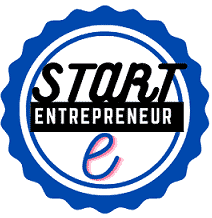4 Beginner Tips For Building An NFT Marketplace – When you think of NFTs, a few things come to mind. Perhaps they are thoughts of buying digital art or even getting that rare in-game weapon. Either way, the hype is real. With NFTs going mainstream, it’s wise to consider what aspects of NFTs show potential for growth. Some believe it’s the utility or the art. But others learn to look a little bit deeper – NFT marketplaces.

What Is An NFT Marketplace?
A non-fungible token, commonly known as an NFT, is a digital asset stored in the blockchain. These assets come in a variety of forms – art, in-game items, and even real estate. Essentially, almost anything digital counts as an NFT. A non-fungible token is distinguished from an ordinary digital asset by
If you want to dive into the world of NFTs, get a digital wallet. The more popular ones include Metamask and Coinbase Wallet. But, there are newer NFT wallets that are also gaining traction. You’ll use this wallet to connect to NFT marketplaces. In these marketplaces, you’ll find different NFT collections that suit your taste. The marketplaces also differ according to the blockchain network associated with them.
For example, you’ll find Ethereum-based NFTs on Opensea, the largest NFT marketplace. This leading marketplace expanded recently to include Solana NFTs. However, Magic Eden is still the king of Solana NFT Marketplaces. At least, in terms of NFT trading volume.
The big boom of NFTs led to the launch of a plethora of NFT marketplaces, all of which are found in different blockchain networks. Cardano, Avalanche, and Binance Smart Chain are examples of up-and-coming blockchains with available marketplaces. And with new blockchain networks still in the works, this number is only bound to increase.
Build Your Own NFT Marketplace With These 4 Tips
Jumping on the NFT bandwagon may seem quite daunting, especially for the non-techies. In reality, just about anyone can get their hands on this tech innovation – even beginners! And yes, that includes building your own NFT marketplace. But enough talking. Let’s get down to business and discuss some tips to get you started with your own NFT marketplace.
Create A Team
Building an NFT marketplace you can call your own is no easy feat. In your journey to creating your marketplace, you’ll need a few helping hands along the way. That means hiring business analysts, web developers, and the like. Find professionals capable of building frontend, backend, smart contracts, and data storage. A technically competent team keeps your online marketplace safe from cyber attacks.
Pick Your Niche
The ever-growing use cases of NFTs only mean that your niche options are endless. NFTs tokenize digital art, music, tickets, in-game items, and more! If you’re looking to create a leading NFT marketplace, it helps to do your research and know what’s trending. Especially in the fast-moving pace of the NFT world, money flows from one collection to another as quickly as you discover the new in-thing.
Here’s a pro tip when finding a niche: read up on the latest data for NFT collections. Then, observe what collections bubble up. But, there’s more to research than just numbers. Take your research a step further by joining NFT communities on Twitter and Discord.
Once you’re connected, you’ll gain insights from fellow enthusiasts on promising niches. As they say, an NFT collection is only as good as its community. There’s no better way to find leads than by talking directly to the NFT community.
Going the specialist route may not be for everyone, though. When narrowing those down gets tough, a general NFT marketplace works, too. Know that the more general the marketplace, the fiercer the competition.
Choose Your Blockchain Network
Just like picking a niche, choosing a network is crucial to building an NFT marketplace. Blockchain networks such as Ethereum and Solana already have established marketplaces.
For beginners, penetrating this market could pose a huge challenge. Another option? Search for smaller networks gaining popularity. Finding the diamond in the rough requires hours of research. But once you get it right, you’re golden.
Testing and Debugging
Launching a half-baked product isn’t going to bode well with consumers. That’s why testing and debugging your marketplace should be prioritized. Iron out all the small details before you launch your marketplace to receive a positive impression from the community.
But, know that testing shouldn’t stop at launch. Consider post-launch testing as well to ensure your marketplace consistently runs at peak performance.
Conclusion
Creating your own NFT marketplace is like climbing a mountain. Just like how reaching the summit gives you a sense of accomplishment, so should building an NFT marketplace. After all, it’s still an uphill climb.
You’ll encounter obstacles like finding stiff competition and selecting the right team. But, these roadblocks shouldn’t hinder you from creating a marketplace – beginners included.
The truth is anyone can create an NFT marketplace. As long as you do your own research (also known as DYOR in NFT-speak), you should do just fine.

